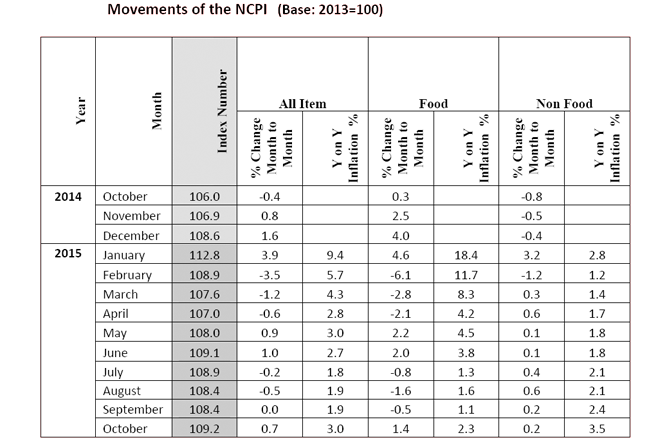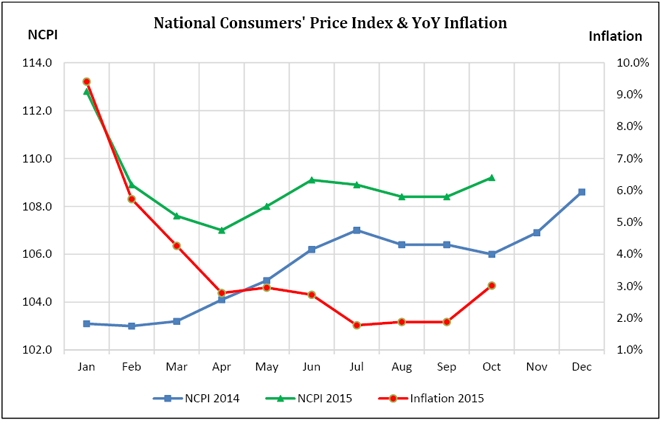ECONOMYNEXT - Sri Lanka's budget for 2016 has outlined reforms which can help the economy grow but there is no clear plan to get spending under control, Fitch Ratings has said.
"The government did take the opportunity of the budget announcement to reiterate an ambitious set of economic reforms aimed at raising foreign investment and boosting the private sector's participation in the economy," Fitch Ratings said.
"If achieved, these broad objectives could be positive for the economy, especially if it reduces dependence on external borrowing to finance growth."
But there was no clear plan to improve finances over the medium term and there are risks to meet its fiscal deficit target, Fitch said.
"Notably, the original 2015 deficit plan of 4.4 percent will be exceeded by a wide margin, underscoring that government's track record of meeting fiscal targets is not strong," the rating agency said.
The full report is reproduced below:
Fitch: Sri Lanka Budget Lacks Consolidation but Reforms Positive
Fitch RatingsHong Kong/Singapore24 November 2015: Sri Lanka's 2016 budget, released on 20 November, provides no clear plan for fiscal consolidation over the medium term.
The absence of such a framework means that the risks of further deterioration in the fiscal deficit will remain, and high public debt relative to Sri Lanka's 'BB' group median is not likely to decline, says Fitch Ratings.
The government did take the opportunity of the budget announcement to reiterate an ambitious set of economic reforms aimed at raising foreign investment and boosting the private sector's participation in the economy. If achieved, these broad objectives could be positive for the economy, especially if it reduces dependence on external borrowing to finance growth.
Weak governance standards remain a factor for low FDI, so any improvements to the ease of doing business could enhance the economic profile over the long run
. The government plans for a deficit of 5.9% of GDP in 2016, which is only a slight reduction from the 6.0% shortfall expected this year. Notably, the original 2015 deficit plan of 4.4% will be exceeded by a wide margin, underscoring that government's track record of meeting fiscal targets is not strong.
Fitch believes there are risks to government being able to meet its fiscal deficit target, especially considering the trend in revenues in recent years. General government revenues have been declining consistently since 2010 a key weakness in the sovereign's credit profile. Revenues had fallen to just 12.3% of GDP in 2014, far lower than the 'BB' median of just over 25%.
This latest budget does little to address the revenue issue directly.
Inability to raise general government revenues are related to structural weaknesses in tax administration and collection. As such, it is notable that income tax collections are estimated by government to decline by 6.4% in 2016. The government does expect total tax revenue relative to GDP to rise in 2016 and overall revenues to jump by 38% versus 17% in 2015, but a large share of this increase comes from nontax revenues.
Much of the increase in non income tax revenues is likely to come from external trade taxes, which should rise by 44% to account for 23% of the total tax intake. This assumes a strong global trade environment, and underscores budget assumptions for rapid GDP growth.
High GDP growth has been a positive factor for Sri Lanka's credit profile. However, Fitch believes that the budget's assumptions may be overly optimistic. The budget expects GDP growth to accelerate to 7% - 8% in 2016, from expected growth of 6% in 2015, while Fitch forecasts growth of 6.4% in 2016.
Expenditures will add to Sri Lanka's fiscal challenges total expenditure is likely to rise to 22.3% of GDP from 19.1% in 2015. Major increases in public investment in education, infrastructure and healthcare could lead to an increase in the general government deficit in the near term, while the benefits to fiscal accounts over the medium term are unclear.
"The government did take the opportunity of the budget announcement to reiterate an ambitious set of economic reforms aimed at raising foreign investment and boosting the private sector's participation in the economy," Fitch Ratings said.
"If achieved, these broad objectives could be positive for the economy, especially if it reduces dependence on external borrowing to finance growth."
But there was no clear plan to improve finances over the medium term and there are risks to meet its fiscal deficit target, Fitch said.
"Notably, the original 2015 deficit plan of 4.4 percent will be exceeded by a wide margin, underscoring that government's track record of meeting fiscal targets is not strong," the rating agency said.
The full report is reproduced below:
Fitch: Sri Lanka Budget Lacks Consolidation but Reforms Positive
Fitch RatingsHong Kong/Singapore24 November 2015: Sri Lanka's 2016 budget, released on 20 November, provides no clear plan for fiscal consolidation over the medium term.
The absence of such a framework means that the risks of further deterioration in the fiscal deficit will remain, and high public debt relative to Sri Lanka's 'BB' group median is not likely to decline, says Fitch Ratings.
The government did take the opportunity of the budget announcement to reiterate an ambitious set of economic reforms aimed at raising foreign investment and boosting the private sector's participation in the economy. If achieved, these broad objectives could be positive for the economy, especially if it reduces dependence on external borrowing to finance growth.
Weak governance standards remain a factor for low FDI, so any improvements to the ease of doing business could enhance the economic profile over the long run
. The government plans for a deficit of 5.9% of GDP in 2016, which is only a slight reduction from the 6.0% shortfall expected this year. Notably, the original 2015 deficit plan of 4.4% will be exceeded by a wide margin, underscoring that government's track record of meeting fiscal targets is not strong.
Fitch believes there are risks to government being able to meet its fiscal deficit target, especially considering the trend in revenues in recent years. General government revenues have been declining consistently since 2010 a key weakness in the sovereign's credit profile. Revenues had fallen to just 12.3% of GDP in 2014, far lower than the 'BB' median of just over 25%.
This latest budget does little to address the revenue issue directly.
Inability to raise general government revenues are related to structural weaknesses in tax administration and collection. As such, it is notable that income tax collections are estimated by government to decline by 6.4% in 2016. The government does expect total tax revenue relative to GDP to rise in 2016 and overall revenues to jump by 38% versus 17% in 2015, but a large share of this increase comes from nontax revenues.
Much of the increase in non income tax revenues is likely to come from external trade taxes, which should rise by 44% to account for 23% of the total tax intake. This assumes a strong global trade environment, and underscores budget assumptions for rapid GDP growth.
High GDP growth has been a positive factor for Sri Lanka's credit profile. However, Fitch believes that the budget's assumptions may be overly optimistic. The budget expects GDP growth to accelerate to 7% - 8% in 2016, from expected growth of 6% in 2015, while Fitch forecasts growth of 6.4% in 2016.
Expenditures will add to Sri Lanka's fiscal challenges total expenditure is likely to rise to 22.3% of GDP from 19.1% in 2015. Major increases in public investment in education, infrastructure and healthcare could lead to an increase in the general government deficit in the near term, while the benefits to fiscal accounts over the medium term are unclear.




